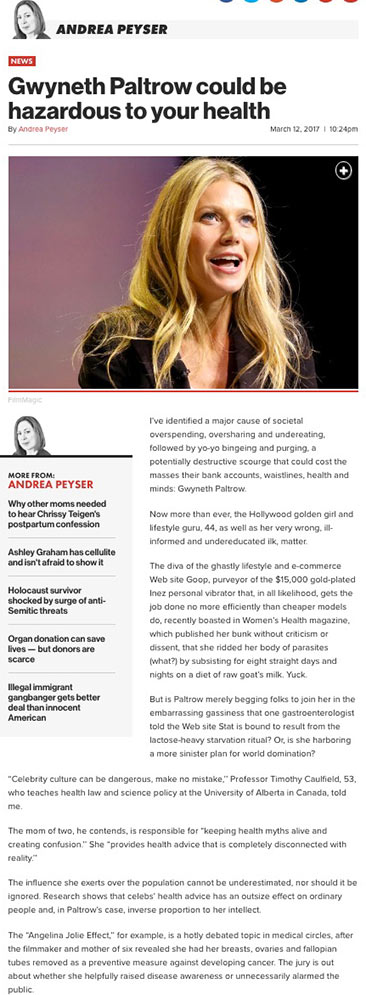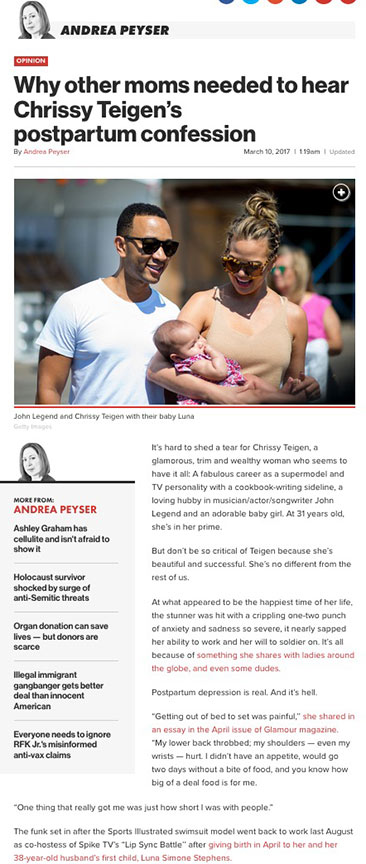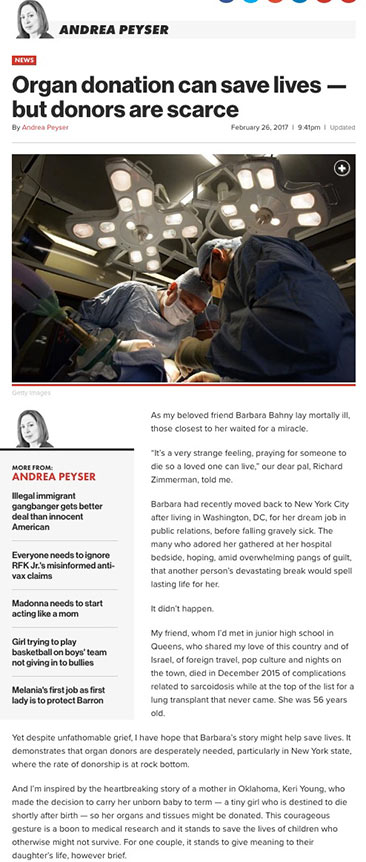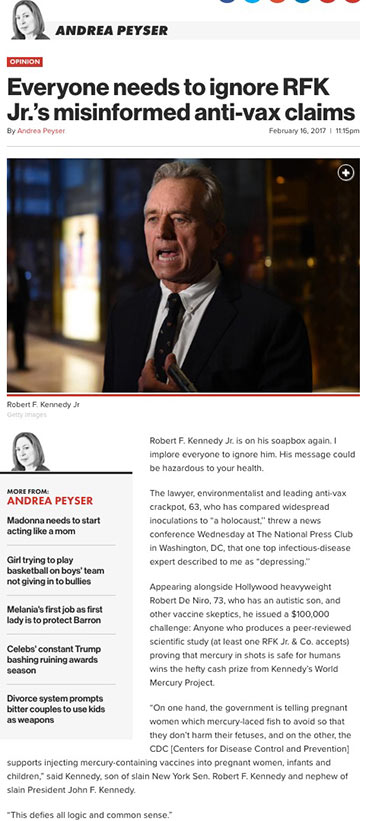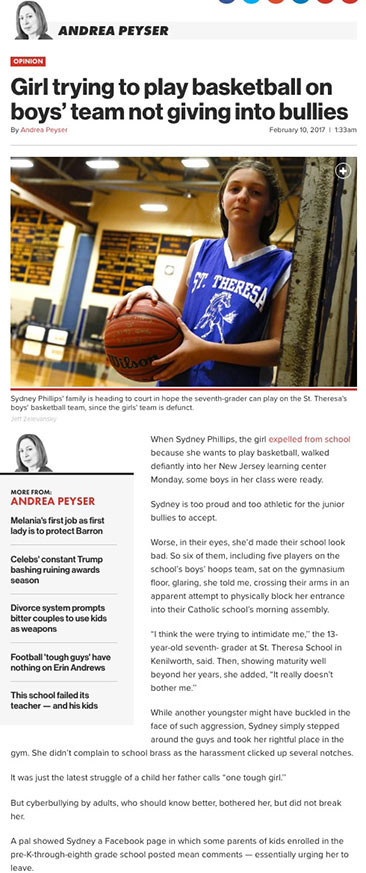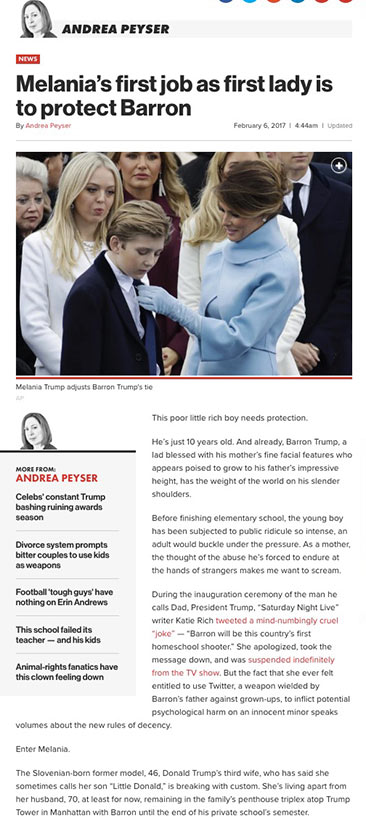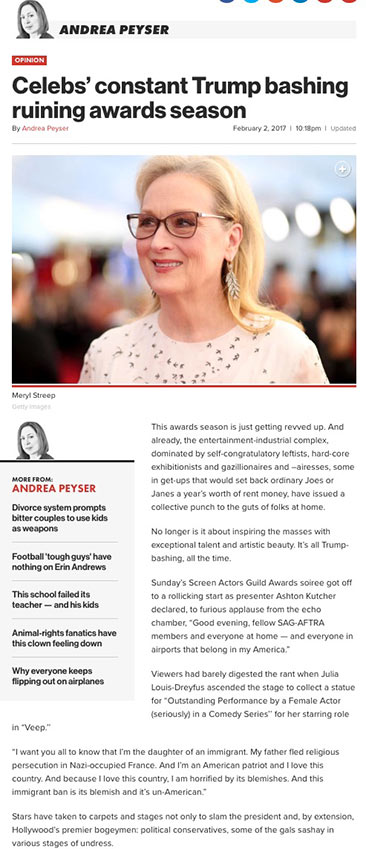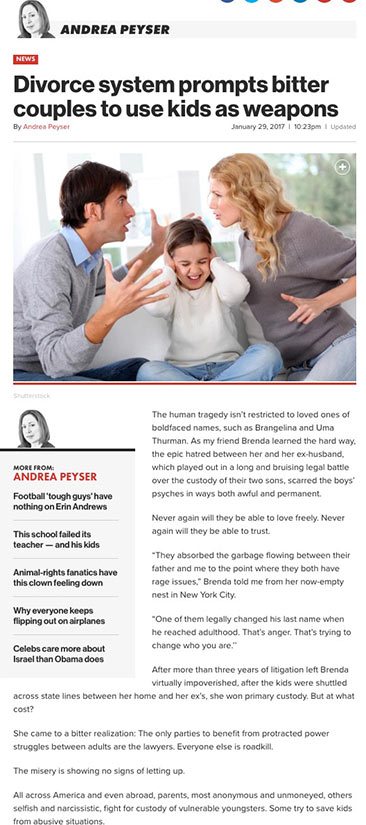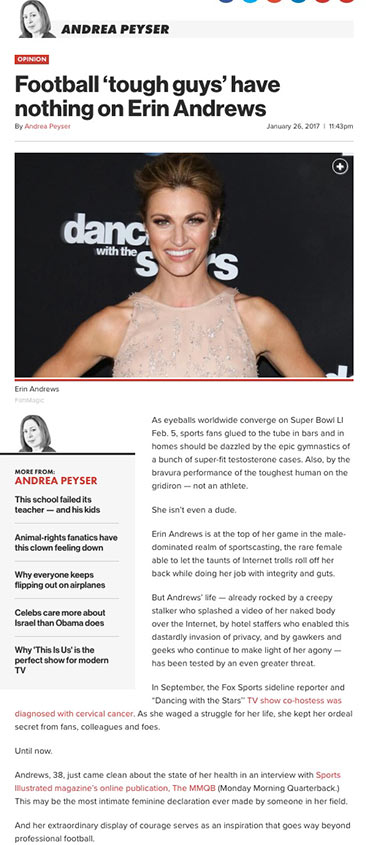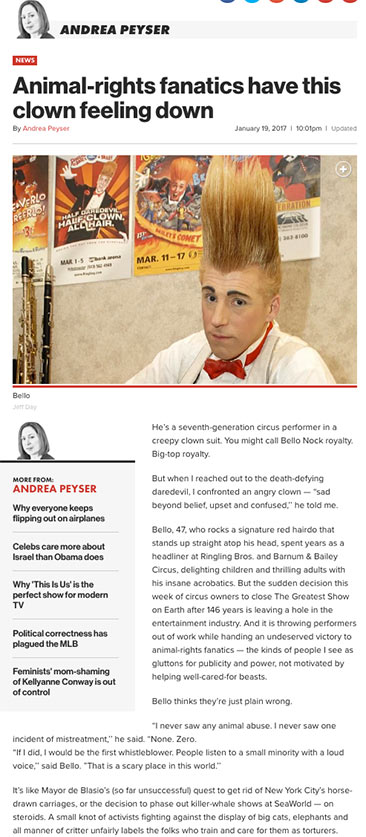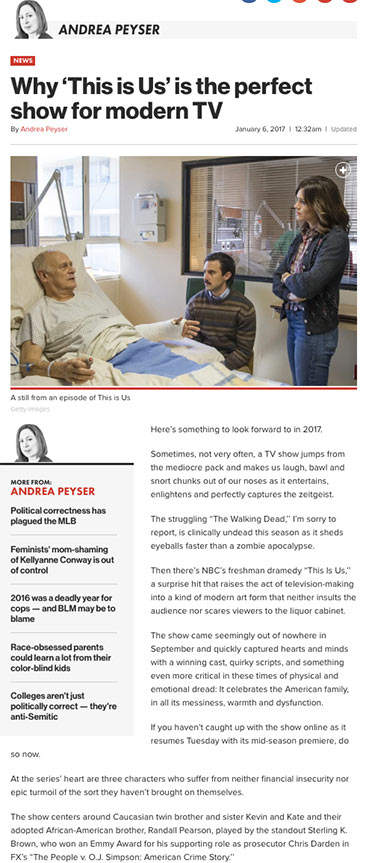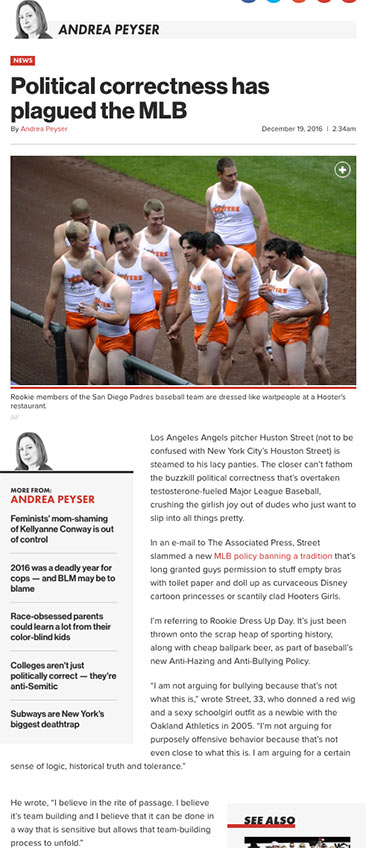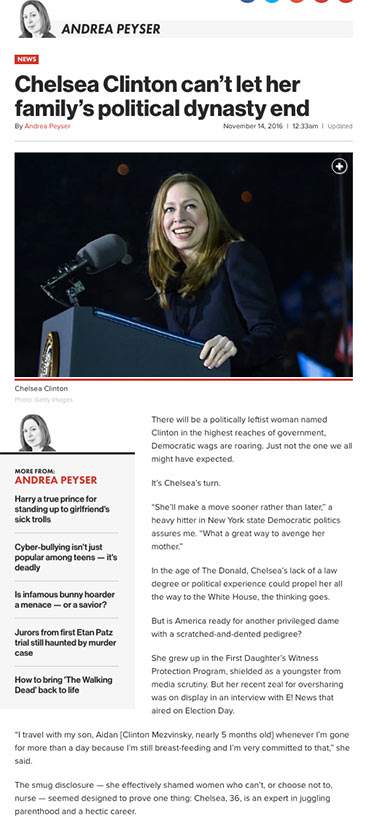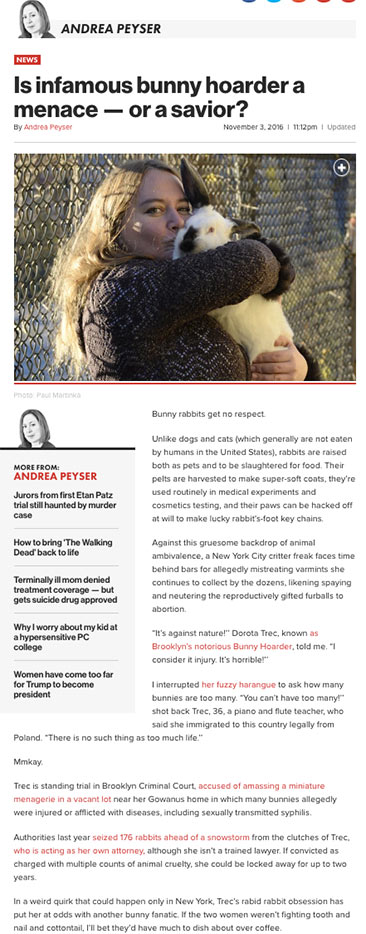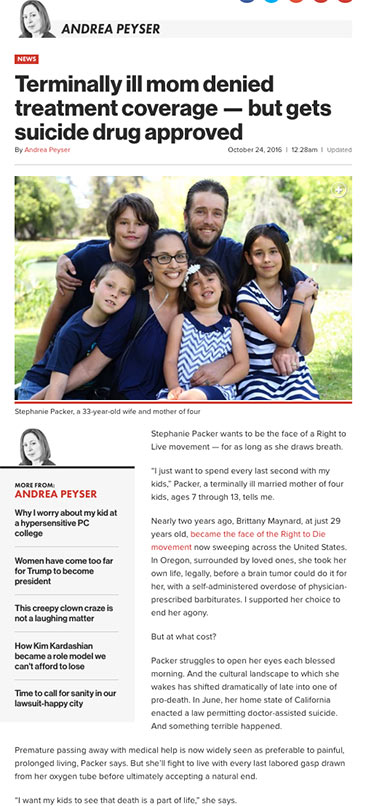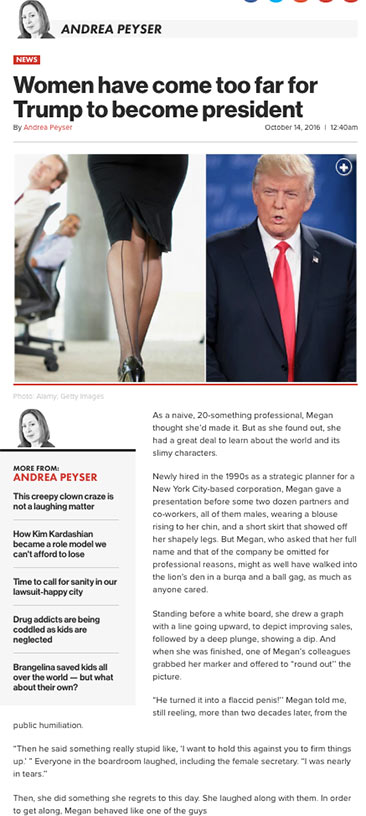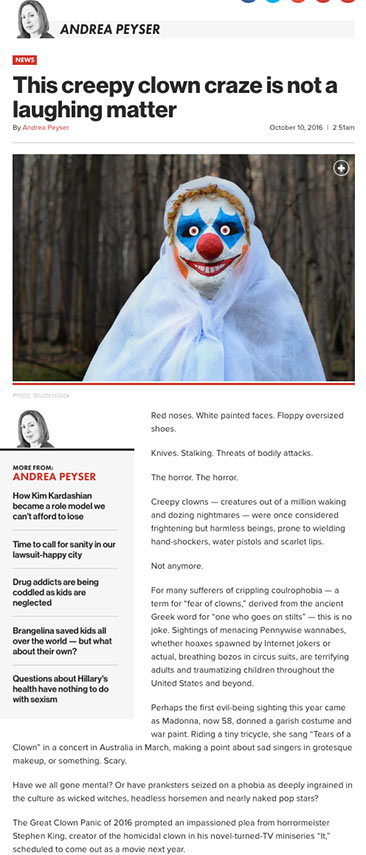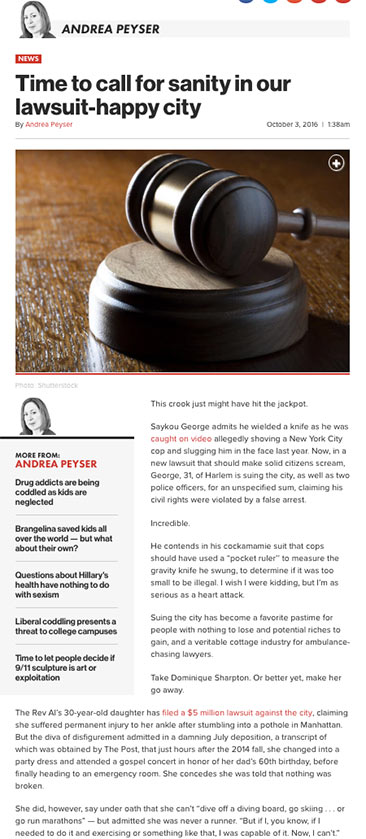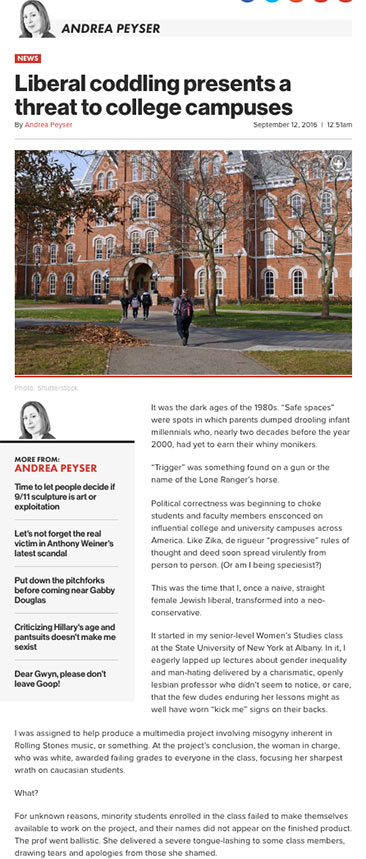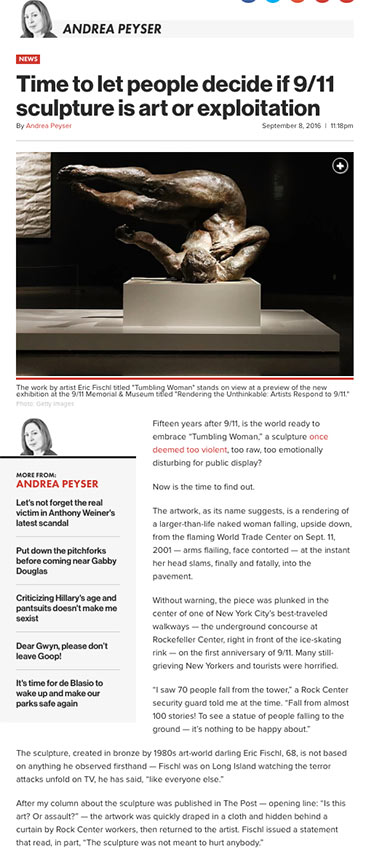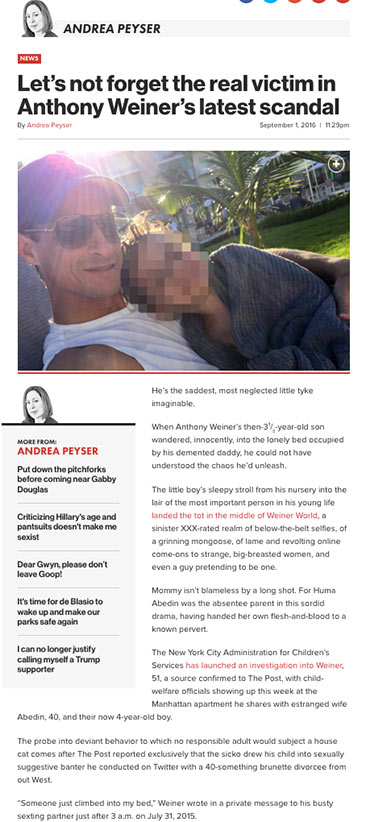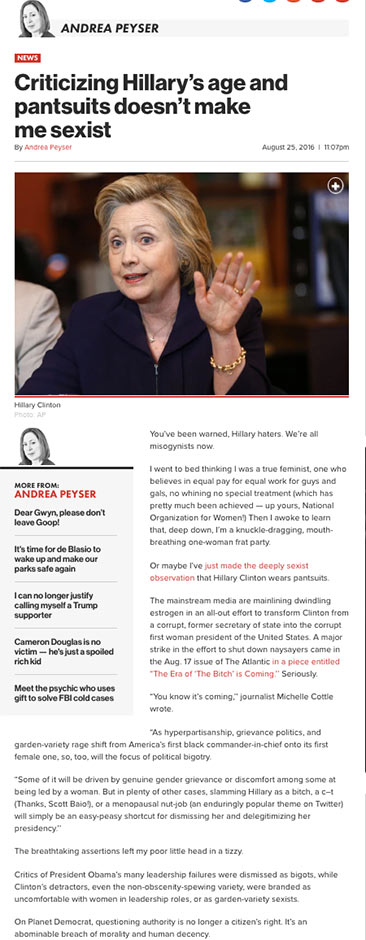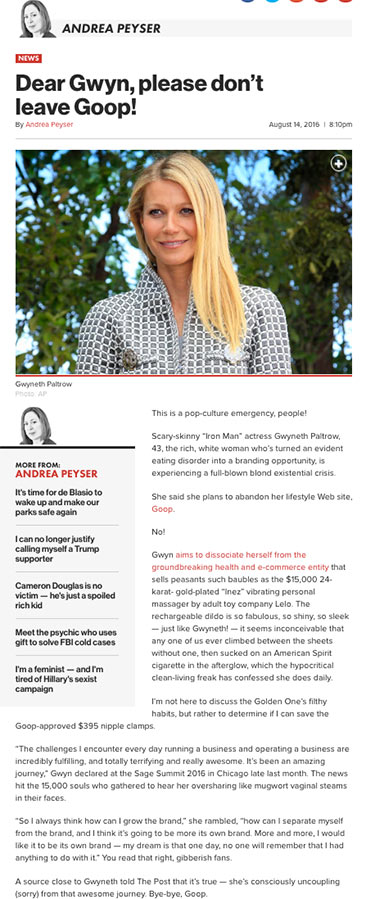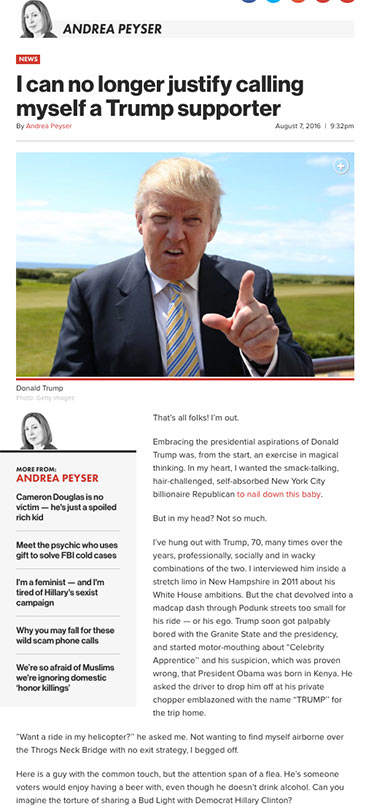©2007-2024
Andrea Peyser and andreapeyser.com; No Reuse without permission.
•Contact Us •Site Map •Biography •Appearances •Book Excerpt •Archive
Tuesday April 30, 2024
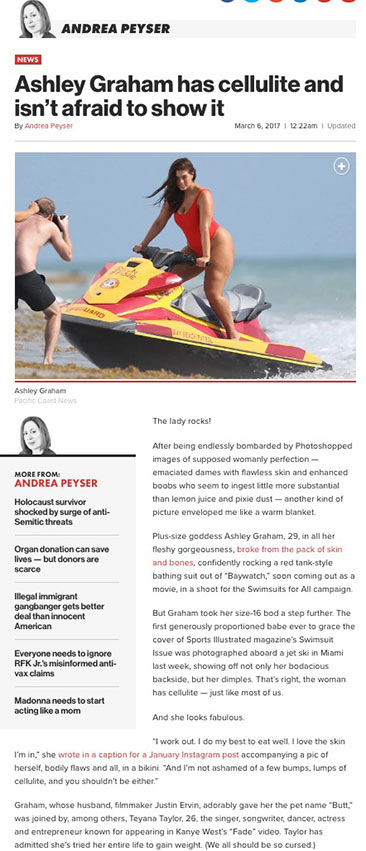
Read more content on NYPOST.com
By Andrea Peyser
March 6, 2017
Ashley Graham has cellulite and isn't afraid to show it
The lady rocks!
After being endlessly bombarded by Photoshopped images of supposed womanly perfection — emaciated dames with flawless skin and enhanced boobs who seem to ingest little more substantial than lemon juice and pixie dust — another kind of picture enveloped me like a warm blanket.
Plus-size goddess Ashley Graham, 29, in all her fleshy gorgeousness, broke from the pack of skin and bones, confidently rocking a red tank-style bathing suit out of “Baywatch,” soon coming out as a movie, in a shoot for the Swimsuits for All campaign.
But Graham took her size-16 bod a step further. The first generously proportioned babe ever to grace the cover of Sports Illustrated magazine’s Swimsuit Issue was photographed aboard a jet ski in Miami last week, showing off not only her bodacious backside, but her dimples. That’s right, the woman has cellulite — just like most of us.
And she looks fabulous.
“I work out. I do my best to eat well. I love the skin I’m in,” she wrote in a caption for a January Instagram post accompanying a pic of herself, bodily flaws and all, in a bikini. “And I’m not ashamed of a few bumps, lumps of cellulite, and you shouldn’t be either.”
Graham, whose husband, filmmaker Justin Ervin, adorably gave her the pet name “Butt,” was joined by, among others, Teyana Taylor, 26, the singer, songwriter, dancer, actress and entrepreneur known for appearing in Kanye West’s “Fade” video. Taylor has admitted she’s tried her entire life to gain weight. (We all should be so cursed.)
Yet she grapples with her own body issues.
“My favorite part [of my body] used to be my breasts, but now my breasts belong to Junie,” she said in an interview with Self magazine published in January, referring to her 1-year-old daughter with husband Iman Shumpert, 26, a hoops player for the Cleveland Cavaliers.
“I appreciate every stretch mark, every sag,” she said. “One boob is bigger than the other . . . but it is what it is. I love my body and I love the place that I’m in.”
What is happening here?
Women displaying diverse body types, ages, races and even disabilities are finally being presented as attractive, strong and desirable.
They’re crushing on red carpets and runways, in all forms of entertainment, social media and even at offices and on the streets.
Once, worthiness was thought to live exclusively inside the frames of anorexic and bulimic, mainly teenage mannequins wearing Size 0. Now, Dame Helen Mirren, 71, and muscular tennis star Serena Williams, 35, are widely considered hotties. Oscar winner (for her supporting role in “The Help”) Octavia Spencer, a lovely full-figured lady of 46 years, was front and center at the Oscars, nominated again for her supporting role in the flick “Hidden Figures.”
Even some Barbie dolls, which began encouraging impressionable young girls to binge and purge in 1959, have grown love handles and pot bellies.
And the sexiest gal on television these days may be Chrissy Metz, 36, of “This Is Us,” a woman of size who recently had two male characters on the show vying for her affection. (Her contract requires her to lose weight; NBC brass should reconsider.)
The cynic in me sees the effort to find desirability in previously marginalized populations as a moneymaking scheme, using big, pretty women to sell cute clothing to those once steered toward muumuus rather than thong underwear.
But what’s wrong with women looking fine?
“The popular culture is reflecting what you see every day,” female body-image expert Stacey Peterson, Ph.D., 50, a professor of communication studies at Montgomery College in Maryland, told me.
“It’s important for women” — we’re primarily talking about women here — “to see images of people who look like us. It’s very positive for a young girl to see a model of her femaleness, someone who’s full-figured, whatever the politically correct term is. We’re seeing it depicted more regularly and positively, and that’s new,” she said.
This should in no way be taken as an endorsement of obesity, an epidemic that leads to the deaths of about 300,000 American men and women annually from ailments including diabetes, heart disease and even certain types of cancer, according to the National Institutes of Health. This is about maintaining good health at every weight.
“What we want to encourage is people being healthy, taking care of themselves, physically and emotionally,’’ said Peterson.
All women deserve the right to feel awesome.

